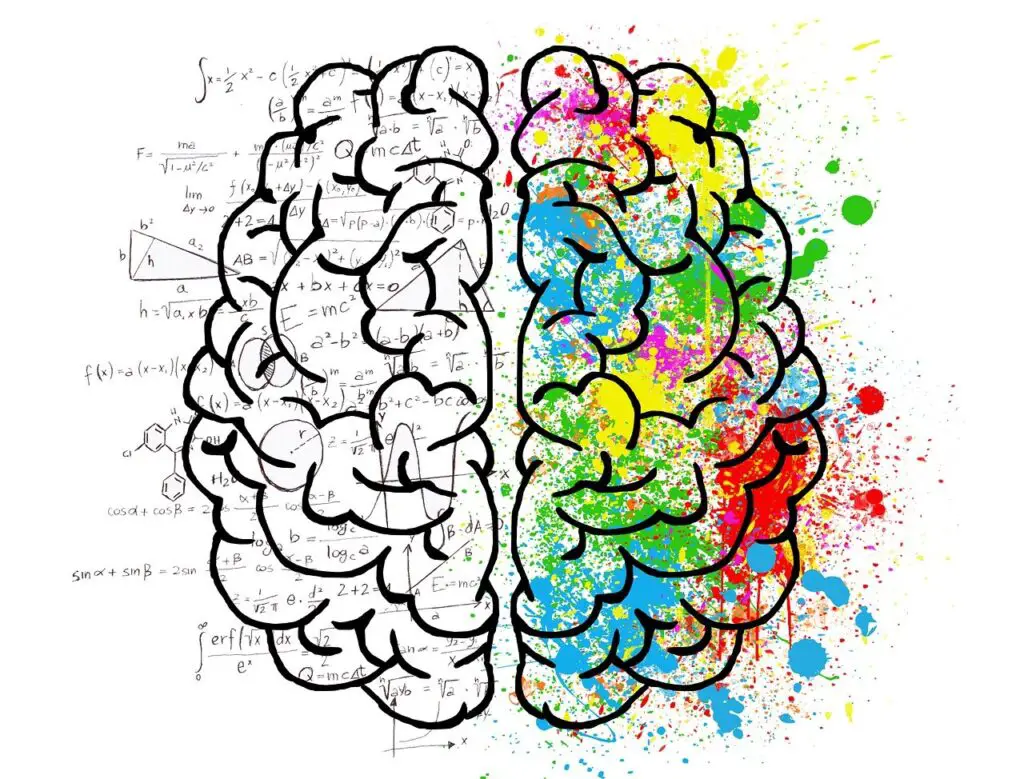Teaching EFL/ESL draws on a huge range of skills and abilities. Whether you’re giving dynamic classes to young children or preparing adults for life-changing proficiency exams, the profession challenges everyone in a variety of ways.
One of the joys of teaching English is there’s no one correct way of doing it. Every teacher offers their unique approach, and students have their own learning preferences, too.

But there are some things all EFL/ESL teachers should bring to the table. They’re fundamental skills that successful practitioners do well and that new teachers should aim to improve.
I’ve taught English in primary schools, language academies and as a private tutor since 2015. From my experience, I’ve identified 10 fundamental skills that apply to all EFL/ESL teachers.
If you’re a new EFL/ESL teacher, or thinking of getting into the profession, please don’t feel overwhelmed by the content in this article. What I describe is the end goal. Nobody can say they’re great at all these skills when the start out, and even the most experienced of us are still improving every day.
There’s no reason why anyone can’t learn the skills here and become an amazing teacher.
So, with the intro out of the way, let’s get to it!
- Understanding people
- Analysing student needs
- Planning
- Creativity
- Using resources and technology
- Flexibility
- Creating an environment for learning
- Classroom management
- Communicating ideas
- Understanding the English language
1. Understanding people
The first entry on this list gets to the heart of what I believe teaching is about. People.
Standing in front of a group of students and explaining something, then expecting them all to learn it is ineffective. It’s the traditional model, but far from optimal for most learners.
The problem is, a teacher who doesn’t engage with their students can’t understand their perspective.
Students are all different. A good teacher knows that each of their students has a unique set of characteristics, for example:
- culture
- family background
- personality
- social pressures from parents and peers
- health
- learning preferences
Students who attend a prestigious international school in Switzerland have completely different characteristics to those in a charity school in the favelas of Rio de Janeiro. And within those two classes, each individual student has their unique set of circumstances.
This is not to say teachers should perform in-depth psychological assessment of all their students.
Instead, the skill is to connect with people. Get to know them on a personal basis (while remaining professional) in order to fully understand how they see learning and how best to relate to them.
2. Analysing student needs
We just looked at the importance of understanding our students in a broad context. What’s equally important is being able to analyse and assess our students’ capabilities with English, their strengths, weaknesses, interests, goals and progress.
This is less about knowing them as a person, and more about knowing them as a learner. Of course, many of the personal characteristics we spoke about cause them to have a certain learner profile, but the analysis here is more specific and detailed.

Before planning any class, a teacher should know some key things about their students:
- current control of English – vocab, grammar, etc.
- confidence speaking out loud
- goals and motivations (exam prep, improve fluency, parents forcing them)
- energy level – do they like getting up and about, or sitting quietly
- favoured topics and themes
Young children typically have a much different learner profile to business English adults. But even within a class of kids, students have different abilities and preferences. A good teacher knows these things.
To find out about my students, I always perform a Needs Analysis in the first lesson. A Needs Analysis is essentially a framework for figuring out the strengths, weaknesses, preferences and goals of students in order to inform future lesson targets.
If you want to learn how to perform a Needs Analysis, read my article: Needs Analysis for Private EFL/ESL Lessons: 12 step guide. It’s aimed at private tutoring, but the concepts apply to all classes.
While the Needs Analysis is a great thing to do early on, the process doesn’t end there. It never stops. People change. And hopefully their English needs will alter as they progress. You should be continuously analysing students’ needs, both through assessment techniques and frequent communication.
3. Planning
There’s no surprise this is on the list. Planning is an integral part of teaching any subject, and EFL/ESL is no exception.
But planning isn’t just something you have to do before each class, it’s a skill in itself. Copying a lesson plan off the internet is much different to constructing bespoke, detailed, differentiated lesson plans for each session.
I’m not going to criticise people who get their lesson plans from the internet or a book. As a new teacher, I did it. At that point in your career, you don’t have the skills and experience to go it alone.

And many schools (and online platforms) provide lesson plans for you to follow. Sometimes you have little choice.
But following instructions is the lower end of the skill level. New teachers should take those pre-prepared lessons and begin to understand the structures and intentions, learning how to adapt and modify them, just a little at first, then with larger strokes until they can start making their own.
At the top end of the skill level, teachers use their understanding of their students and the analysis of their needs from points 1 and 2 on this list to inform their lesson plans.
For example, if you had a group of young students from a challenging neighbourhood who struggle to focus and have limited ability with grammar, but love football, instead of getting a generic plan from the internet, you could design a lesson to suit them.
Games and activities with a football theme which practice basic grammatical forms. Can you practice present simple verb forms while watching a clip of a football match? Get students to commentate: “he passes the ball, he runs with the ball, he shoots… he scores!”

Long-term planning is important, too. Knowing how to keep a good pace, include appropriate assessment methods, build upon prior knowledge and keep things fresh over the course of an academic year are all important skills, too.
Most public schools and many language academies and online platforms already have a curriculum in place. Even so, understanding how they work is useful. And some teachers are expected to design an entire curriculum themselves.
To learn more about putting together a successful curriculum, read my article: What Should an EFL/ESL Curriculum Include? 8 key concepts.
4. Creativity
Creativity is a word that means different things to different people. In this case, I’m using it to talk about the ability to create new and valuable activities, games and projects that challenge and motivate students while focusing on their learning needs.
In the last entry, I gave an example of designing a football-themed activity to engage learners and get them practicing what would otherwise be quite a boring grammar function.
For me, this is one of the most rewarding parts of teaching. Thinking of novel solutions that apply to the specific context of your students and the materials you have available, then putting them into practice is remarkably fulfilling.
Of course, it’s not always easy. Some of my ideas have failed to create the impact I desired. Some went way better than expected.
I consider creativity a skill, not an inherent ability. It’s something you can improve with practice, experience and the courage to make mistakes.
5. Using resources and technology
Some classrooms are lucky enough to have a variety of high-quality teaching materials and the latest technology. Most aren’t.
An important skill in EFL/ESL teaching is making the most of the materials you have, creating your own resources, and implementing the available technology in an effective way.
I often ask myself the question, “What are the best materials I can get hold of, or already have, to make this activity as successful as possible.” Choosing the correct resources can make or break the lesson.
Getting the most out of technology is really important. There are so many things you can do with an internet connection and a basic computer (most school computers aren’t very modern!).
With a digital whiteboard, you have even more options. Do you know what all the features are? Can you use them to create better learning experiences?
I’ve found a number of free apps that are hugely useful in class, and also for organising online work. You can read about them here: 9 Best Free Apps for EFL/ESL Teachers and How to Use Them. And for a list of helpful materials, check out this article: 9 Items Every EFL/ESL Teacher Needs for Brilliant Classes.
6. Flexibility
All the planning in the world can’t prepare you for the curveballs you’ll receive in your classes.
You can’t predict that half of your class will be fifteen minutes late because the traffic was bad, or that a student had to go home sick, so your group sizes no longer work, or that the exciting outdoor activity you planned just happened to fall on the one day of the year it rained.
But you can be flexible.
Flexibility comes in two forms: planned and improvised.
First, planned flexibility is when you prepare for things to go awry. You have a backup plan. The activity you thought would go 20 minutes only went 10, but it’s okay, because you planned an extension task and a no-prep game in your back pocket for this eventuality.
Second, improvisation. This is for those times you couldn’t possibly predict and even your backup plans go out the window. You have to think on your feet.
You often learn this skill the hard way.
When I was a language assistant in a primary school, the classes were prepared by the native teacher, and I just assisted. But every now and then, the native teacher would be absent with little notice, and I had to improvise a 45-minute class with no guidance. Stressful, yes, but something that made me a better teacher.
7. Creating an environment for learning
Students who feel safe, confident and motivated learn better than those who are insecure and disengaged.
While there are a thousand things that affect a student’s state of mind as they go into your classroom, some factors are under your control. A good teacher sets up everything to create a positive learning environment.
Some of these things are simple:
- Students should not be afraid you’ll yell at them.
- The physical environment should be comfortable.
- The activities in the lesson should be relatable and engaging.
However, there are a few less obvious things that subtly open student’s minds to learning.
- Student’s shouldn’t fear failure when taking risks. That means they shouldn’t be mocked or criticised for trying and failing.
- Social pressures should be eased. Some students hate standing up in front of the class and speaking.
- Feedback should be mostly positive and supportive rather than only in the form of corrections.
- Rewards should be avoided. Students learn better when they enjoy the learning itself, rather than doing it for a particular treat.
These are general rules. Each class has a different dynamic, and being able to adapt to the personalities in the group and make them all feel comfortable and motivated is a challenging, but valuable skill.
8. Classroom management
Ah, classroom management. If you get it wrong, it can lead to disaster. Get it right, and you can’t relax, because you have to maintain it in the long term.
Did you ever have a teacher at school who everybody respected without question? What was it about them that gave them such great control over the class?
In my experience, those teachers were often the most experienced, the ones who had mastered classroom management over many years. It was like they’d figured out the secrets to this mysterious art.

Now, I’m no classroom management guru, but there are a few things I know that work.
The first, and most important, is setting expectations early on. If you don’t agree what is acceptable and what isn’t, students won’t know, and you’ll be constantly dealing with misunderstandings and students attempting to find the limits of what they can get away with.
Yes, this applies to adults, too. While you wouldn’t expect most adults to misbehave, some can be disrespectful, interrupt you, not listen, and spend the class watching their phone.
Establish the boundaries early on. Not just in relation to what they can and can’t do, but what kind of attitude they should bring, how they should treat other learners and how much homework they should expect. If students are mature enough, get them to offer their own thoughts and agree limits together.
I prefer to set expectations with a positive tone. “Respect other students” is preferable to “don’t disrespect other students.”
One part of setting expectations that few teachers think about, is setting expectations from the teacher. If you show them you’re also accountable, it shows you’re not an all-powerful dictator, and instead working with them.
For my guide to setting expectations in class, head to this article: How to Set Rules & Expectations in Private EFL/ESL Classes
The second big thing is staying consistent. Once you’ve set your expectations, you must stick to them. If students don’t comply with what you agreed at the start, you must follow up with the agreed consequences. If you don’t, students will realise the expectations are meaningless.
Another big part of classroom management is gaining attention when things are noisy. There are a million different techniques from clapping to mini-dance routines, call and response, etc.
I’ve found a simple countdown works just as well as any other.
- Three, time is up so let’s stop what we’re doing
- Two, pens down, mouths closed. Well done, Anita, you’re almost ready.
- One, take a deep breath iiiiinnnnn.
- Zero, and ooouuuuttttt. Well done everyone, now we’re ready to play a game!
This works for a few reasons.
First, you give students enough time to finish what they were doing and shift their attention. You can’t expect to raise your hand and all students suddenly drop what they’re holding and stare silently at you. It takes a while to really get students ready to listen.
Second, instructions guide students so they know what they should be doing to get ready to listen.

Third, praise for students doing the right thing encourages others to do the same.
Fourth, the breathing is an optional extra. It calms students and stops them from talking, gently bringing them to an attentive state all at the same time.
9. Communicating ideas
This is one of the most recognisable teacher skills – explaining ideas and concepts.
The ability to communicate to students who don’t speak the same language as you is a skill developed over time, and while the specifics vary between different cultures, some principles are universal.
- Speak slowly and deliberately. Choose your words carefully so you don’t include too many colloquial expressions or vocabulary that is too complex for your students’ level.
- Repeat complex ideas. Students who didn’t get it the first time round have a much better chance the second or third time. If you’re still not getting through after repeating a couple of times, don’t just repeat again and again, instead switch to a different approach.
- Use your body. Gestures are universal and powerful. They capture attention and transmit messages that otherwise would get lost in speech.
- Write to support your speech. Seeing the words written keeps the message available and some students work better with written language.
- Use images and realia. Like gestures, they can transmit what words cannot.
- Build complex ideas in a logical sequence. Plan how you would explain something by breaking it into chunks and consider the order in which to present them – foundations first.
- Elicit student knowledge to create a platform of understanding.
- Give relatable examples. Knowing what students are interested in allows you to frame concepts in a familiar context for them.
Knowing your students and analysing their needs lays the groundwork for communicating with them. The rest is developing a variety of techniques.

Sometimes you won’t be able to get your point across, so try a different method. Work with your students and try to understand their perspective before getting frustrated with their inability to understand.
Communication is one of the hardest skills. And failure is inevitable. But practice leads to improvement, and most teachers become confident communicators with a little experience and guidance.
10. Understanding the English language
This one is pretty obvious. If you want to teach the English language, you should know about the English language.
But you don’t have to be a linguistics expert. I’m certainly not.
What you need to know depends on the students you’re teaching. Advanced students demand a greater understanding of complex grammar, like modal perfects and the subjunctive. But most students aren’t advanced.

You may be tempted to think that teaching little kids basic English means you don’t have to know much about the language. It’s not the case.
In fact, at that age, they’re solidifying important concepts in their mind, mostly the sounds of English and how they relate to letters.
Phonics are vital at that age. If you know the background and can teach the correct sounds and letters, you can set up your young students for a much easier learning journey as they grow older, as their pronunciation, spelling and ability to decipher new words will be fluid and automatic.
Like most TEFL teachers, when I started out, I had a decent but not extensive understanding of the English language. I knew the fundamentals of grammar, but I couldn’t have told you the four different structures used to talk about the future (present simple, present continuous, going to, and will).
I learned as I went along. And that’s fine. If we all had to study every aspect of English before becoming a teacher, well, most of us probably wouldn’t make it.
But it is a skill you develop over time, with careful study and a positive attitude. All good teachers know their stuff.
Conclusion
If you’re a new teacher looking at this list and feeling like you don’t have some, or even most of these skills yet, don’t panic! You’re at the beginning of the journey. As long as you approach your teaching with a positive, ready-to-learn attitude, you’ll get better at all ten things on the list.
More experienced teachers will recognise most, if not all, of these skills in their own teaching. There may be one or two that are stronger than the rest, and perhaps others that are lacking. There’s always room for improvement, no matter your training and experience.
I hope this list has inspired you to get better at one aspect of your teaching, or has affirmed that what you’re doing right now is really great. So keep striving, keep learning, and keep pushing forward on your journey to being the best teacher for your students!











